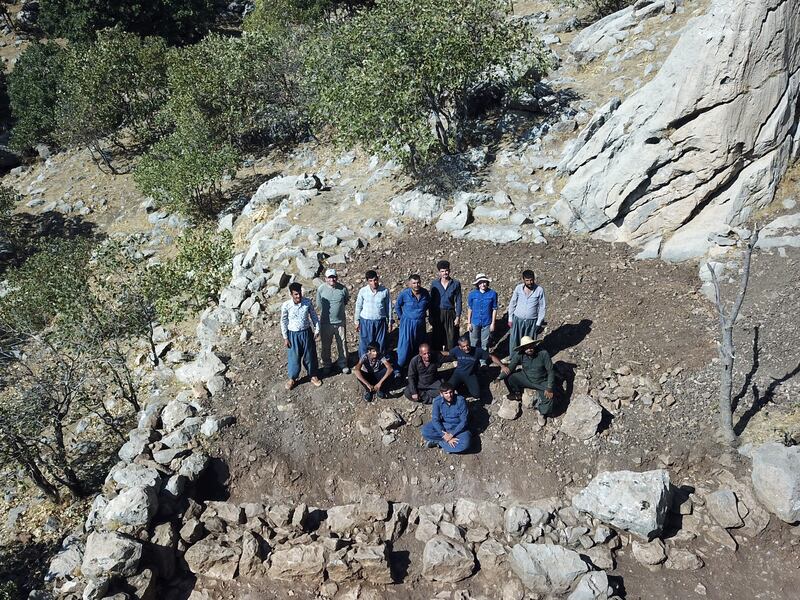The mountain fortress of Rabana-Merquly in modern-day Iraq may be the lost city of Natounia, a team of archaeologists has concluded after more than a decade of research.
They believe it was one of the major regional centres of the Parthian Empire, which extended over parts of Iran and Mesopotamia about 2,000 years ago.
Dr Michael Brown, a researcher at the Institute of Prehistory, Protohistory and Near-Eastern Archaeology of Heidelberg University, Germany, and Iraqi colleagues studied the remains of the fortress to provide insights into the settlement structures and history of the Parthians.
He told The National that the discovery of rare coins led archaeologists to believe there is a lost city "somewhere" in the region.
He said rock reliefs at the entrance to the fortress were of special significance — and could depict the city’s founder — along with the geographic location of the fortification near the Lower Zab River, known in antiquity by its Greek name of Kapros, helping the team to conclude it may be the lost city.
"The latest work is significant because we now understand that all the various archaeological features in the area — castle, rock reliefs, sanctuary — are parts of a single massive fortified settlement," Dr Brown said. "Before, some parts were known but we didn’t understand the relationship. The settlement is strategically located on the edge of the mountains, so undoubtedly played a role in controlling the surrounding restive highlands.
"The dress of the figure in rock reliefs marks him out as a king of Adiabene, a vassal kingdom on the border between Parthia and Rome in the first century BC to first century AD."

Dr Brown said there is surprisingly little knowledge about the Parthians, even though the annals of history record them as a major power.
Situated on the south-west flanks of Mount Piramagrun in the Zagros Mountains, the stone fortress comprises not only the fortifications that stretch for 4 kilometres but also two smaller settlements.
A number of excavations have taken place from 2009 and most recently between 2019 and 2022, but because of its high position on the mountain, mapping the site was possible only by using drones.
Structures that have survived to this day suggest a military use, as they include the remains of several rectangular buildings that may have served as barracks. The researchers also found a religious complex possibly dedicated to the Zoroastrian Iranian goddess Anahita.
Until now, the existence of the royal city alternatively known as Natounia-on-the-Kapros, or Natounissarokerta, has been documented only on a few coins dating from the first century BC. According to one scientific interpretation, the place name Natounissarokerta is composed of the royal name Natounissar, the founder of the Adiabene royal dynasty, and the Parthian word for moat or fortification. “This description could apply to Rabana-Merquly,” said Dr Brown in the journal Antiquity.

He told The National that Natounissar is not well known but is believed to have headed the Adiabene dynasty when the kingdom was at its most powerful. He probably played an important role in the development of Hatra, a major desert trading city. "If he was a real person, rather than an eponymous ancestor, he was undoubtedly a king of major historical importance," Dr Brown said.
He said the relief resembles a likeness of a king that was found approximately 230km away in Hatra, a location rich in finds from the Parthian era.
Rabana-Merquly may have been used to conduct trade with pastoral tribes, maintain diplomatic relations or exert military pressure. “The considerable effort that must have gone into planning, building and maintaining a fortress of this size points to governmental activities,” Dr Brown said.
During the latest excavations at Rabana-Merquly, Dr Brown collaborated with colleagues from the Directorate of Antiquities in Sulaymaniyah, a city in the Kurdistan region of Iraq.







